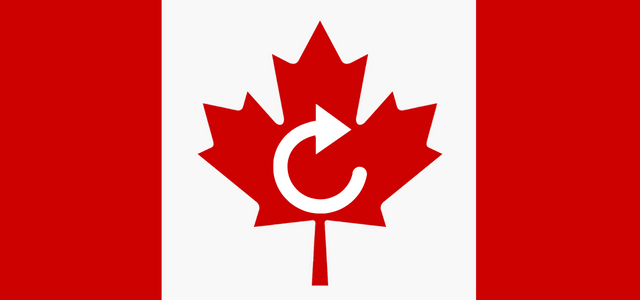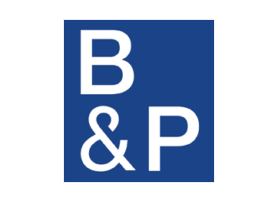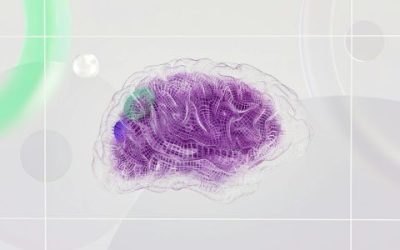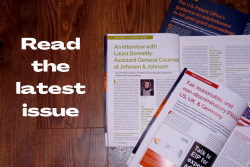Patent re-examination is the only process available in the Canadian Patent Office to challenge a Canadian patent. There can be success in killing a patent in a Canadian re-examination, as reported here. In that case, a patent was revoked on the basis of obviousness. However, re-examinations are rarely instituted in Canada, unlike in the United States where there have been over 15,000 ex parte reexamination requests historically. As well, hundreds of US Inter Partes Review (IPR) petitions are filed yearly. There is no inter partes (multi-party) review in the Canadian Patent Office.
A recent Canadian dispute involving re-examination proceedings highlights the need to be very strategic when deciding whether to start a re-examination proceeding. The case also underscores why resort to re-examinations will likely continue to be rare.
Canadian Patent No. 2,760,802 (the ‘802 patent) claims a dosing regimen for treating multiple sclerosis with glatiramer acetate, marketed by Teva as Copaxone. Teva brought infringement proceedings against Pharmascience. Then Pharmascience counterclaimed that the ‘802 patent is invalid. Prior to trial, Pharmascience filed a request for re-examination of the ‘802 patent, and as part of the process, the re-examination Board issued a preliminary opinion finding the ‘802 patent obvious.
However, while those re-exam proceedings were ongoing, a decision issued from the Federal Court finding claims 1-66 of the ‘802 patent valid. The decision was brought to the attention of the re-exam Board, but it nonetheless issued a second preliminary decision finding the ‘802 patent obvious. Pharmascience appealed the court judgment and Teva successfully brought a motion to stay re-examination pending final resolution of Pharmascience’s appeal.
The parties raised the issue of whether re-litigation of the same issues during re-examination can be prevented (i.e., issue estoppel). The Court declined to address this point. Ultimately, the Federal Court of Appeal affirmed validity of claims 1-66 of the ‘802 patent and dismissed Pharmascience’s appeal. Leave to appeal to the Supreme Court was denied, which lifted the stay of the re-examination proceedings. In its submissions to the re-exam Board giving notice of the court decisions, Teva argued that continuation of re-examination was precluded by issue estoppel. A final decision was rendered by the Board on October 28, 2022 and, consistent with the court decisions, it found claims 1-66 of the ‘802 patent not obvious to try. In reversing its preliminary opinions, the Board relied on expert evidence proffered by Teva at trial addressing the common general knowledge of the skilled person and concluded the skilled person would not have been motivated to pursue the claimed dosing regimen.
The Copaxone dispute highlights shortcomings inherent in Canadian post-grant challenge proceedings. For example, it underscores the importance of having an opponent participate to get a fuller evidentiary record on questions of validity. In this unusual case, the fuller evidence presented during trial proved pivotal to the ultimate re-examination outcome. However, a third party challenging a patent by way of re-examination is normally limited to providing prior art in Canadian re-examinations and arguing that a substantial new issue of patentability has been raised by the prior art to meet the threshold to trigger re-examination. Once that challenger files its request for re-examination, no further opportunity is provided to the challenger to make submissions. By contrast, during US ex parte reexaminations, a requester may file a reply addressing patent owner submissions (see here). IPR, a further post-grant review option available in the US provides for discovery, an oral hearing, and in some cases, live witness testimony where credibility is a central issue, all the while remaining more cost-efficient than full litigation proceedings. Allowing even limited third party participation in the Canadian re-examination process beyond providing prior art would provide a re-exam Board with a more fulsome evidentiary record on which to base its decision, which would ultimately add value to a re-examined patent.
Further, lack of clarity over whether issue estoppel applies to re-examinations in Canada encourages unnecessary duplication of proceedings, as demonstrated in the Copaxone dispute where parallel court and re-exam challenges were allowed to proceed unabated. In contrast, it is clear in the US that estoppel applies to inter partes reexamination proceedings (see here). This enhances the finality and value of IPR decisions and discourages frivolous attempts to re-litigate claims already considered in an IPR. This is beneficial when the Patent Trial and Appeal Board (PTAB) does a thorough and balanced job, with sufficient evidence presented. We note that some US commentators have questioned whether US PTAB judges are too quick to invalidate patents, which is a different issue than the focus of this article, i.e., that Canadian re-examination should have fuller participation by challengers and clarity on issue estoppel may be a useful piece in revitalizing the re-examination process.
The Copaxone dispute emphasized certain limitations inherent to Canadian re-examinations that may be working to discourage use of these proceedings in favor of expensive and time-consuming patent litigation. Both patentees and third parties in Canada would be better served by a more inclusive post-grant review procedure that has a predictable relationship to full court proceedings addressing overlapping issues.
You may also like…
Smart AI automation in IP management
Just like websites, smartphones, and open-source software dramatically changed our modern era, artificial intelligence...
AI and the corporate IP landscape: strategic transformation and the road ahead
The pace of change in intellectual property (IP) management is accelerating, and artificial intelligence (AI) is at...
Small investment, big protection: why clear communication in IP builds real business value
“A brand dispute can cost tens of thousands – while protection costs only a few hundred.” A single brand dispute can...
















